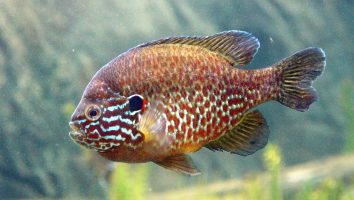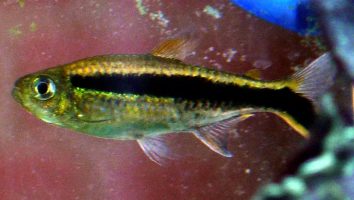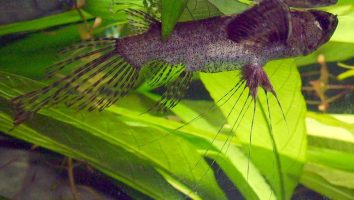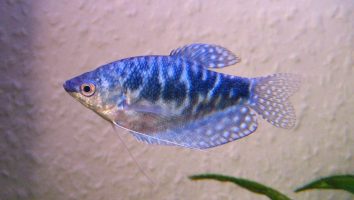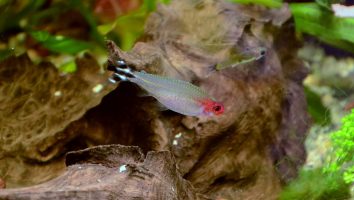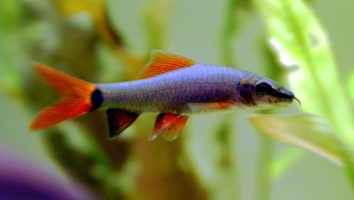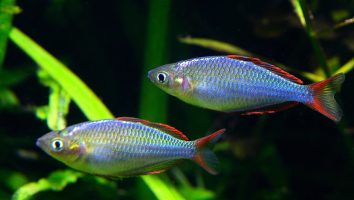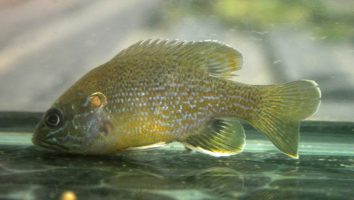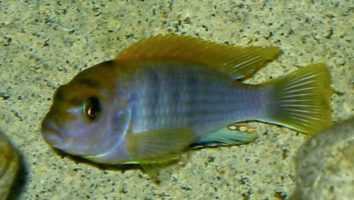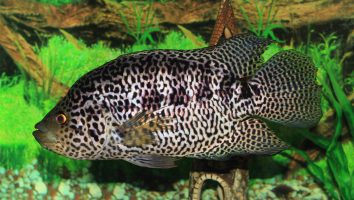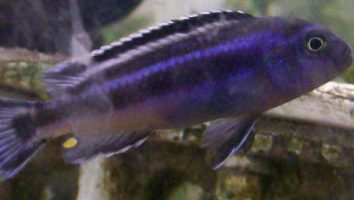The Serpae Tetra (Hyphessobrycon eques) is a beautiful freshwater fish that is perfect for beginners. They are easy to care for, and can live in a wide range of water conditions.
This species is also very peaceful, making them a good choice for community tanks. They are a schooling fish, so we recommend buying at least 6.
In this guide, we will go over everything you need to know about Serpae Tetra care. Tank size, diet, tank mates, and more.
Table of contents
Species overview
The Serpae Tetra ( Hyphessobrycon eques) is a freshwater fish that hails from South America. It is found in the Amazon Basin in countries such as Peru, Brazil, and Colombia.
This tropical fish prefers to live in slow-moving waters that are heavily planted. These plants provide the perfect hiding place for the small Serpae Tetra, and the low current means they don’t have to work too hard to stay in one place.
The diet of the Serpae Tetra in the wild consists mostly of small insects and other invertebrates. In the aquarium, they will readily accept most flake and pellet foods.
The Serpae Tetra is a peaceful fish that is compatible with most other community fish. The only exception is other fish of the Hyphessobrycon genus, as they can be quite territorial toward one another.
Appearance
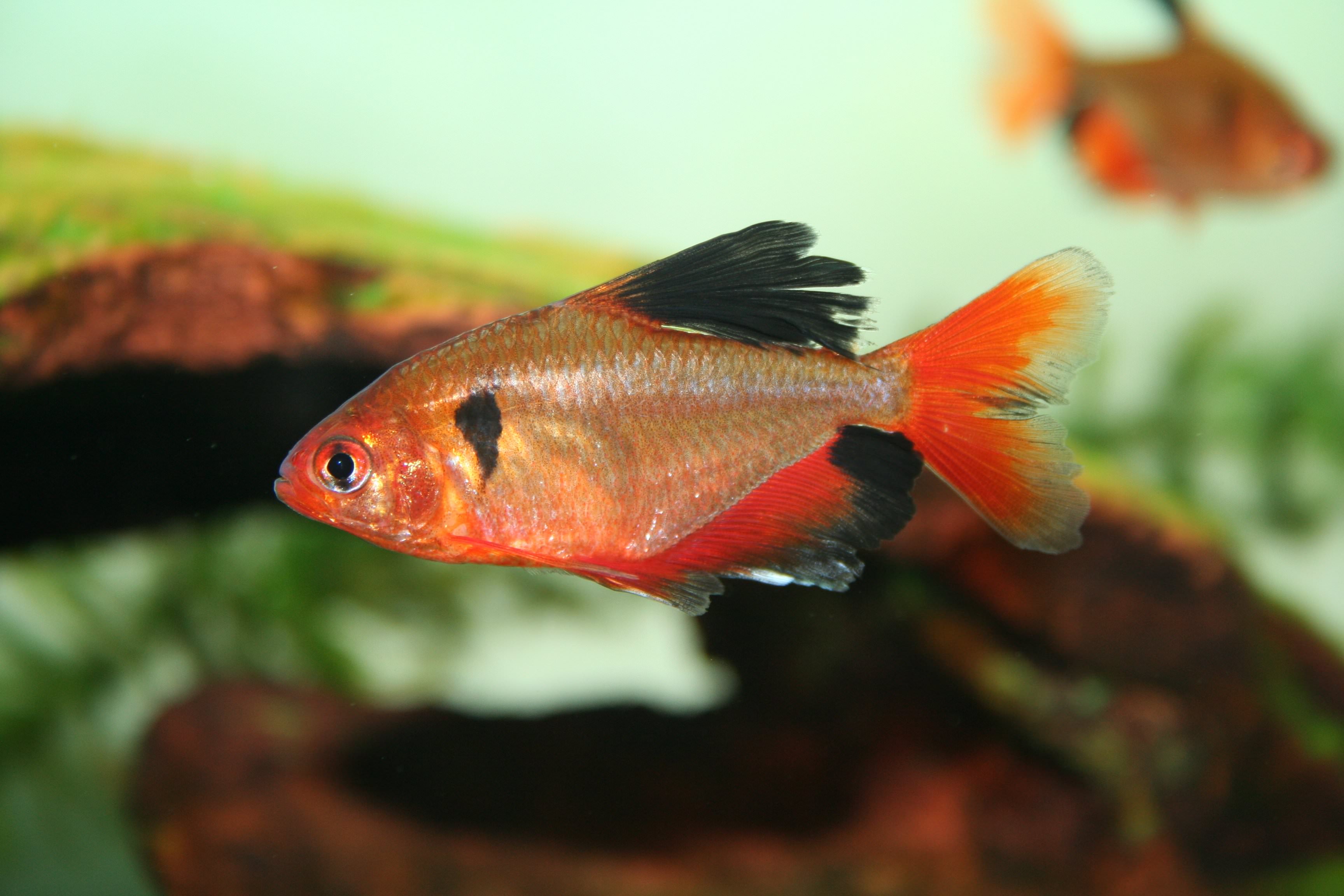
The first thing you’ll notice about the Serpae tetra is their coloration. The body of this freshwater fish is a beautiful reddish color that can almost look brown in certain lighting. There is also a black stripe that runs from their nose, through their eye, and to the base of their tail.
This black stripe is a very defining characteristic of this species and really makes them stand out in a tank.
The body of the Serpae tetra tapers off towards the tail. The fins on this fish are also reddish in color and quite thin. The dorsal fin is slightly taller than their anal fin and both of these fins run the length of the body.
The caudal fin is forked and symmetrical. The pectoral fins are thin and long while the ventral fins are shorter.
One of the things that really sets this species apart is their eyes. Serpae tetras have large eyes that almost look cartoonish. This gives them a very expressive look that can be quite charming.
Lifespan
The average lifespan of a Serpae tetra is 5 to 8 years. But, like all fish, there are a number of factors that can impact their life expectancy.
For example, if they’re kept in subpar conditions then their lifespan will be shorter. This is due to the increased stress levels and the likelihood of them getting sick.
On the flip side, if they’re well cared for then they can live towards the upper end of their lifespan range.
Size
These little beauties only grow to be about 2.5 inches in length, making them one of the smaller aquarium fish on our list. However, they are very active swimmers and need plenty of space to move around. As a result, you should plan on a tank that is at least 20 gallons for a small group of Serpae Tetras.
Tank
Tank Size
The recommended minimum tank size for Serpae tetras is 20 gallons. If you’re looking for a schooling fish, it’s best to keep them in groups of at least 6 fish. This means you might need a slightly larger tank if you want to maintain a healthy school.
As with most schooling fish, we recommend going with the biggest tank you can accommodate. The more space you can give them, the happier and healthier they will be.
Water Parameters
The Serpae Tetra is a freshwater fish that is relatively easy to care for. They are a very active fish that requires a lot of space to swim. They prefer to live in groups and should be kept in an aquarium with at least 8 other fish.
The water parameters that are ideal for Serpae Tetras are as follows:
- Water temperature: 72 to 82 degrees Fahrenheit
- pH levels: 6.5 to 7.5
- Water hardness: 4 to 8 dGH
- Alkalinity Levels: 2-12 dKH
What To Put In Their Tank
Serpae Tetras are a very peaceful species of fish, so you don’t have to worry about them disturbing anything in your aquarium.
In terms of plants, they’re not fussy eaters so you can put whatever you want in there. We recommend something like Java Fern or Hornwort.
As for the substrate, go with something soft and sandy. These fish like to dig around a bit so a harder substrate could damage them.
You can also include some driftwood and rocks in their tank. Just make sure that the rocks aren’t too sharp since they could cut your fish.
Common Diseases
Serpae tetras are a pretty hardy species of fish. They’re not particularly susceptible to disease, but that doesn’t mean they can’t get sick.
The most common illness that these fish experience is ich. This is a parasite that will attach itself to your fish and cause white spots to form on their body.
If left untreated, ich can be fatal. However, it’s usually not too difficult to treat. You can find plenty of ich treatment guides online (just do a quick Google search).
Other potential illnesses include infections, parasites, and various fungal diseases. As with ich, these are all treatable if you catch them early enough.
The best way to prevent your serpae tetra from getting sick is to maintain a clean and stable tank. This will create an environment that is less conducive to disease and will help your fish stay healthy.
Behavior & Temperament
The Serpae Tetra is a small, peaceful fish that is perfect for beginner aquarists. These fish are easy to care for and are very social, so they do best in groups.
Serpae tetras are known for being lively fish that are always on the move. They are constantly swimming around the tank, exploring their environment and looking for food. These fish are also known to be fin nippers, so they should not be kept with fish that have long fins.
Serpae tetras are very active fish
The Serpae Tetra is a very hardy fish, so it can tolerate a wide range of water conditions. However, it is important to keep their water clean and free of ammonia and nitrites.
Serpae tetras are not aggressive fish, but they are known to be nippy. They should not be kept with fish that have long fins, such as bettas and angels.
Tank Mates
The serpae tetra is a beautiful freshwater fish that is popular in the aquarium trade. They’re known for their long fins and bright red coloration.
Serpae tetras are peaceful fish that do well in community tanks. They’re not overly active and tend to stick to the middle and lower levels of the water column.
In terms of compatible tank mates, the sky’s the limit. These fish do well with most community fish species. Some good options include:
- Guppies
- Platies
- Neon Tetras
- Cardinal Tetras
- Black Neon Tetras
- Rummy Nose Tetras
- Harlequin Rasboras
- Ghost Shrimp
Breeding
Serpae tetras are another species of fish that are relatively easy to breed in captivity. These fish are livebearers, which means that they give birth to live young rather than laying eggs.
To start the breeding process, you’ll need to set up a separate breeding tank. The tank should be at least 30 gallons and should have a fine gravel substrate. You’ll also need to add some plants and other hiding places.
When the tank is set up, add two males for every female. These fish are relatively peaceful, but the males can be a bit aggressive with each other. That’s why you need to have more females than males.
You don’t need to make any changes to the water temperature. Just keep it within the normal range for the species.
Once the fish are acclimated to their new environment, they should start to breed. The female will give birth to around 20 fry at a time.
The fry are very small and need to be fed microscopic foods. You can purchase special fry foods or culture your own live foods.
Conclusion
The Serpae Tetra is a beautiful freshwater fish that is popular in the aquarium trade. They are peaceful fish that do well in community tanks and are easy to care for.
The only real downside to owning these fish is that they can be nippy, so be sure to keep an eye on them if you have other fish in the tank.
Other than that, we think they make great additions to any aquarium and would recommend them to any fish owner!

